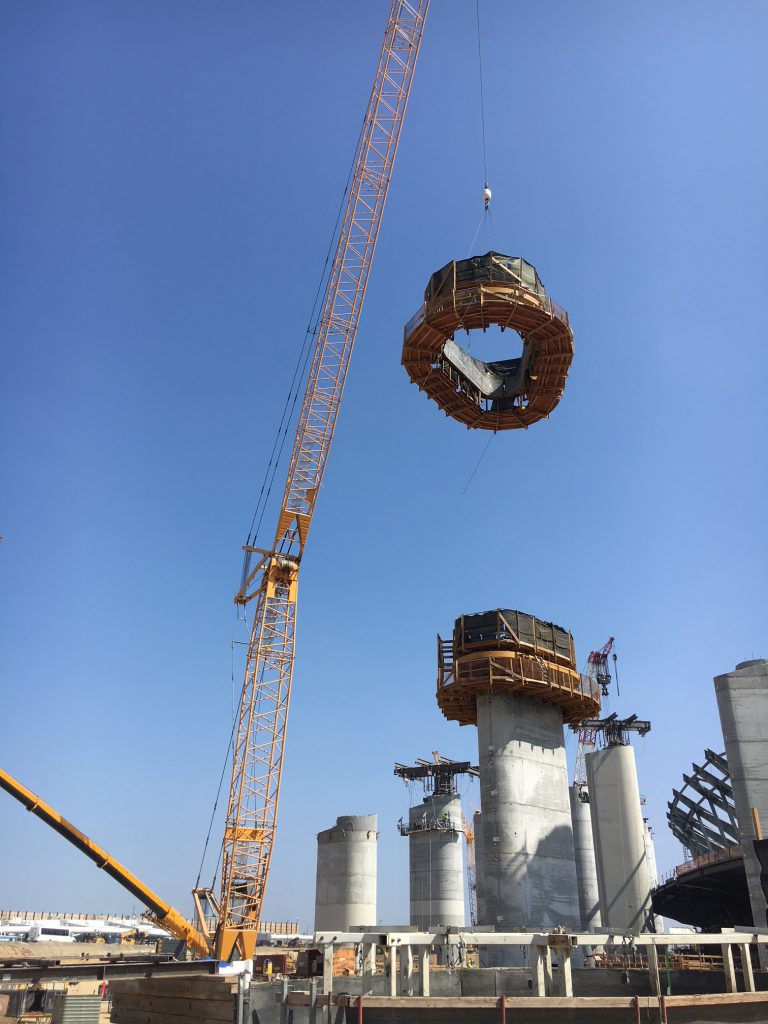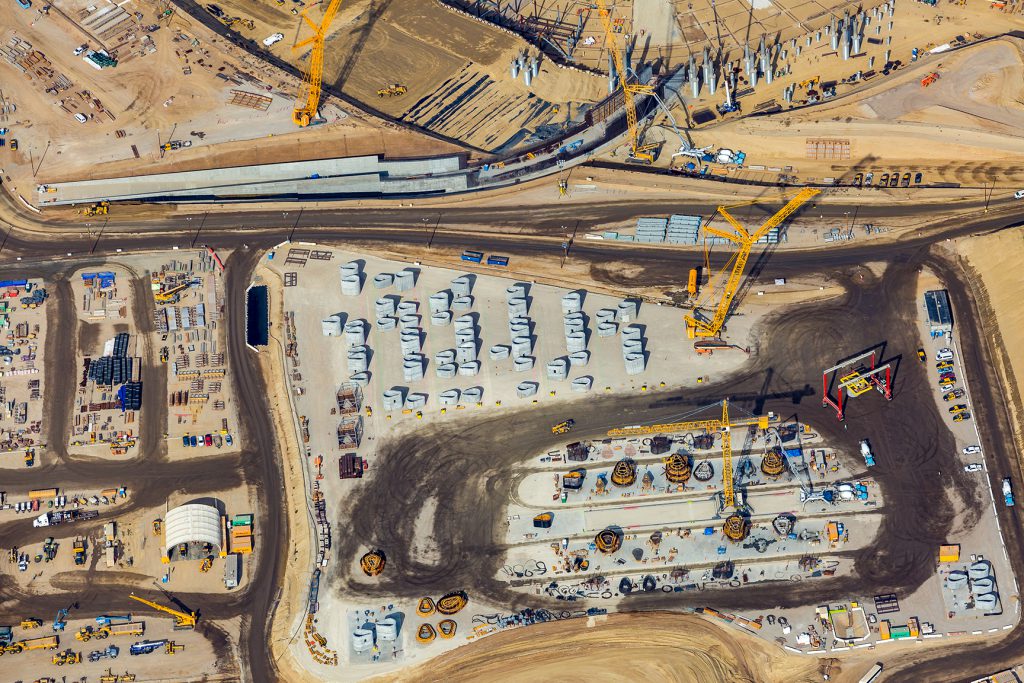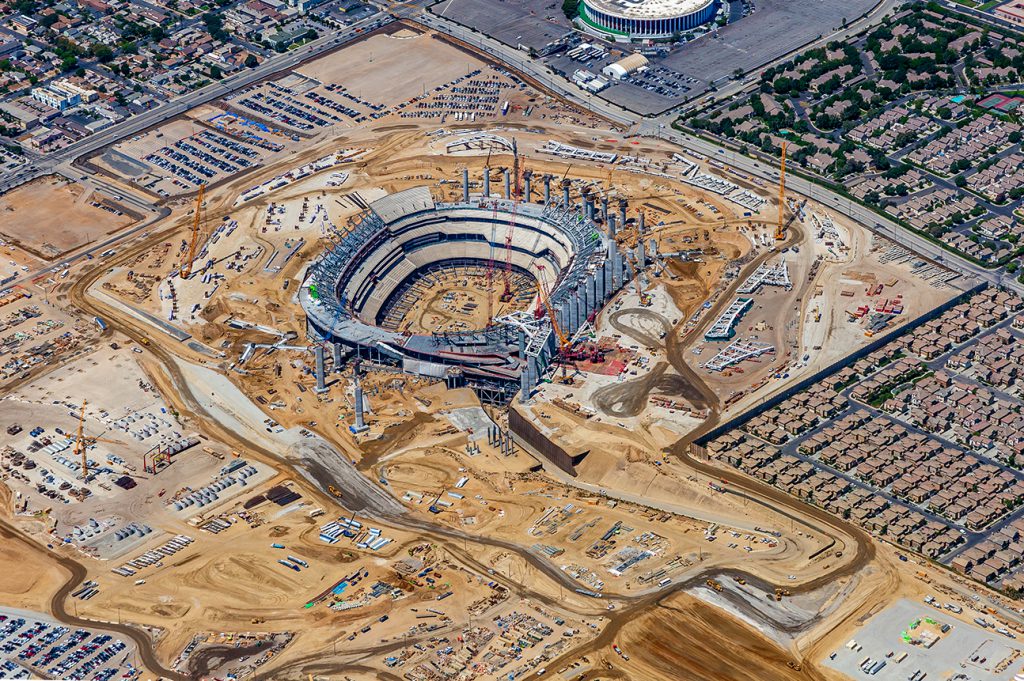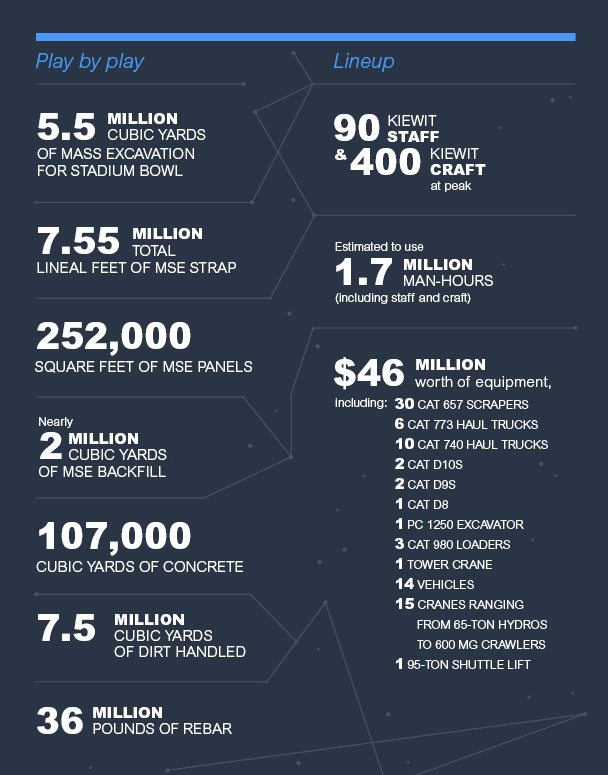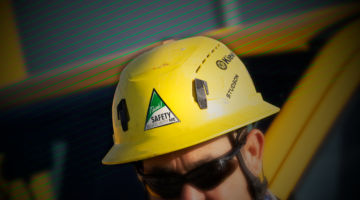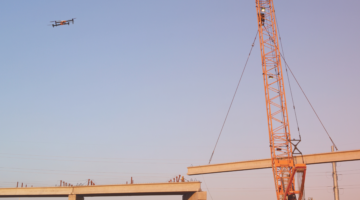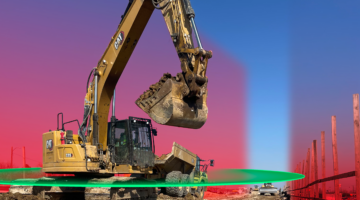As Kiewit’s role in constructing Inglewood Stadium nears completion, it’s clear that this team has got game.
Before the Rams and Chargers take the field in L.A. Stadium in 2020, Kiewit’s own team will already have racked up an impressive record. The team’s wide-reaching experience, coupled with excellent performance, led the client to award additional complex scope, more than tripling the contract value. It’s a job that will stand out for years to come among seasoned project players and rookies alike.
Who do you sign when you need a roster of proven players with stellar stats and the ability to get the ball across the goal every time?
For the project owner and Turner AECOM Hunt, construction manager of the new NFL stadium in Inglewood, Calif., Kiewit was at the top of the list.
A phone call between Andy Peplow, Kiewit project executive, and Bob Aylesworth, principal in charge for Turner AECOM Hunt, began with a question.
Aylesworth had worked with Kiewit previously on Safeco Field in Seattle and Cardinals Stadium in Glendale, Arizona.
“Bob and his team were being asked to meet an aggressive schedule,” Peplow said. “He asked if Kiewit would be willing to look at a different solution for the project’s expansive retaining wall” that could accelerate the work.
Peplow knew the answer to this challenge, as well as anything else that would come their way, was as close as a call to a member of the Kiewit team.
From the start, 1Kiewit would set the tone for this project.
Rising to the challenge through collaboration is the hallmark of 1Kiewit — a company mindset that describes how, on any project, Kiewit people with the right experience and expertise for the job come together from across the country to ensure the project is a success.
A less expensive, faster option
Finding a solution to the project owner’s request would require the Kiewit players to think outside the box.
Because the stadium is in the flight path of Los Angeles International Airport, its field level would have to be constructed 100 feet below existing grade to satisfy FAA restrictions.
The initial design provided by the engineer included a slurry wall that required construction of the wall at the same time of foundation excavation, which would take considerable time.
Kiewit proposed a different idea: a mechanically stabilized earth (MSE) wall made of precast concrete panels that would be substantially less expensive and could be built faster than the original design.
It was the solution Turner AECOM Hunt was looking for. Soon, Kiewit had a contract for the excavation of the site and building the wall.
But this wouldn’t be just any MSE wall, said MSE Wall Manager Justin Daniel. “At nearly 100 feet tall, this is one of the tallest ever built.”
That meant thinking big for both craft and materials. The usual MSE wall has a steel strap, 40-50 feet long, which goes back into the fill. For Inglewood Stadium, this strap reached 120 feet with up to 12 straps per panel.
That added up to over 7.5 million lineal feet of straps and more than 320,000 bolts.
“A typical MSE operation has one crew that does the panels, straps and the backfill,” Daniel said. “But because of the size of this job and all the parts and pieces that we needed, we broke it up into smaller bites. We had separate crews that all they did was the straps, or the panels or the backfill.”
The wall is one of three design-build jobs Kiewit has on the project. The others are a 10-foot cast-in-place wall on top of the MSE wall and a tunnel that will be used to deliver players and concessions to the stadium.
‘Of course, we can do that’
Not long after being awarded the first contract, Kiewit was asked to provide some alternate ideas for the roof columns that support the 20,000-ton, 1.1-million-square-foot stadium canopy.
The original design was a structural steel design with concrete cast around it. However, the density of the reinforcing steel made it an unrealistic option, given the location of the project on an active seismic area.
Talking with one of the Turner AECOM Hunt managers, Project Director Thom Baulisch suggested using
post-tensioned, precast segments to construct the 38 blade columns.
“I ran it by Area Manager Ralph Salamie who said, ‘Oh, yeah, of course, we can do that.’ It really was a great solution for the owner, saving both time and money. And it was possible just because we have such diverse experience and so many resources available in our company.”
Combined with a post-tensioning system that Kiewit uses on bridges, the columns will provide the flexibility required for the facility to withstand up to a 9.0 magnitude earthquake.
Bucket list project
Tensioning each of the columns is a system of 1,450 miles of strand, says Post-Tensioning Superintendent
Meghan Stotts.
Every piece of post-tensioning is made of individual strands that make up a tendon. This job has 7.7 million linear feet of strand, creating 1,700 tendons.
The post-tensioning system travels from the base each column sits on — called a butterfly cap — to an anchor block, or deadman. Every butterfly has 48 post-tensioned tendons going through it: the blade column tendons, loop tendons and strut tendons.
Loop tendons go down from the butterfly caps a hundred feet into the spread footing, across 40 feet
and back up 100 feet.
For Stotts, who grew up playing sports in Minnesota, being on a project like this has always been on her
bucket list.
“I don’t know if the word ‘unique’ really does it justice,” she said. “I never thought in my wildest dreams I’d ever build a stadium. Every time I come to the job I feel like a little kid because it’s kind of a dream come true.”
One-stop shopping
While it will be another year and a half before the teams take the field, the project players will look forward to doing a figurative end-zone dance of their own.
“This has been the best 1Kiewit experience I’ve been part of,” said Peplow. “I’ve never been on a project for Kiewit where we’ve utilized so many of the resources that we have to offer.”
“That includes mobilizing a massive fleet of equipment very quickly and bringing the expertise to set up a precast yard on site to the expertise of the post-tensioning, to our structural and geotechnical expertise and being able to get resources from all over the place.”
Aylesworth says the cost and time savings Kiewit has delivered are substantial.
“I think it’s safe to say that the savings are well in excess of $100 million. From a schedule perspective, I believe the solutions — in particular, the MSE wall — probably saved the project a year. If you’re a National Football League team, that’s a lot.”
“I don’t believe there’s a contractor that has Kiewit’s range of capability, especially as it relates to this project,” Aylesworth added. “For us, it was one-stop shopping.”
